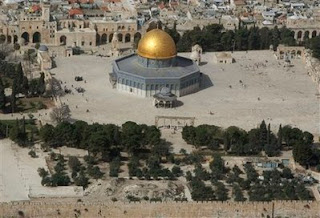 |
| Sultan Suleiman I "The Magnificent" History of Suleiman (Part 2) - 9:57 min |
Suleiman I was the great grandson of Mehmet II (see earlier post) and began his reign of the Ottoman Empire after his father and grandfather, 39 years after Mehmet II. Understanding these two key figures (Mehmet and Suleiman) will give you a better appreciation for the character, Samael Janus, and his motive in “Flight into Darkness”.
 |
| Süleymaniye Mosque, Istanbul, Turkey |
 |
| Coffin of Suleiman I |
An early description of Suleiman, a few weeks following his accession: “He is twenty-five years of age, tall, but wiry, and of a delicate complexion. His neck is a little too long, his face thin, and his nose aquiline. He has a shade of a moustache and a small beard; nevertheless he has a pleasant mien, though his skin tends to pallor. He is said to be a wise Lord, fond of study, and all men hope for good from his rule."
Suleiman also became renowned for sponsoring a series of monumental architectural developments within his empire. The Sultan sought to turn Constantinople into the center of Islamic civilization by a series of projects, including bridges, mosques, palaces and various charitable and social establishments. Suleiman also restored the Dome of the Rock in Jerusalem (the holiest site in Islam, following Mecca and Medina) and the Jerusalem city walls (which are the current walls of the Old City of Jerusalem), renovated the Kaaba in Mecca, and constructed a complex in Damascus.
 |
| Dome of the Rock, Jerusalem |
The significance of “the rock”, better known as The Foundation Stone and Pierced Stone, stems from the religious beliefs regarding the rock at its heart. According to Islamic tradition, the rock is the spot from which Muhammad ascended to Heaven accompanied by the angel Gabriel. Further, Muhammad was taken here by Gabriel to pray with Abraham, Moses, and Jesus Christ. An important distinction is that this is to Islam what the Transfiguration of Jesus is to Christians, a fulfillment of scripture. After Muhammad's return, he called all that would believe him to join with him and be Muslim. It was at this juncture that Islam came into existence.
 |
| The Rock, The Foundation Stone, Pierced Stone |
 |
| Western Wall - Wailing Wall |
This is the holiest site in Judaism. The most propitious site for Jewish prayer is the spot that is nearest the Foundation Stone. Because Muslim authorities refused to permit Jewish prayer on the Temple Mount, the custom developed of praying near the Western Wall (also the Wailing Wall or the Kotel), since it was the site nearest to the Foundation Stone, or on the Mount of Olives facing the site of the Temple. Between 1948 and 1967, when Jordanian authorities refused permission to Jews to enter the Old City of Jerusalem, Jews made pilgrimages to rooftops on Mount Zion and prayed towards the site of the ancient Holy of Holies.
 |
| Western Wall with Dome of the Rock in distance |
 |
| Dome of the Rock on Temple Mount where Solomon's Temple stood |
According to the Talmud, it was close to here, on the site of the altar, that God gathered the earth that was formed into Adam. It was on this rock that Adam—and later Cain, Abel, and Noah—offered sacrifices to God. Jewish sources identify this rock as the place mentioned in the Bible where Abraham fulfilled God's test to see if he would be willing to sacrifice his son Isaac. The mountain is identified as Moriah in Genesis 22. It is also identified as the rock upon which Jacob dreamt about angels ascending and descending on a ladder and consequently consecrating and offering a sacrifice upon.
When, according to the Bible, King David purchased a threshing floor owned by Araunah the Jebusite, it is believed that it was upon this rock that he offered the sacrifice mentioned in the verse. He wanted to construct a permanent temple there, but as his hands were "bloodied," he was forbidden to do so himself. The task was left to his son Solomon, who completed the Temple in c. 950 BCE.
Summary
Suleiman I "The Magnificent" reigned during the height of the Ottoman Empire. He is responsible for having sealed the East Gate (The Golden Gate) in the Old City walls around Jerusalem. The Golden Gate is the gate that leads into the area of the Temple Mount where the Dome of the Rock is now located (see a previous post on Golden Gates).
 |
| The East Gate (Golden Gate) - Dome of the Rock |

No comments:
Post a Comment